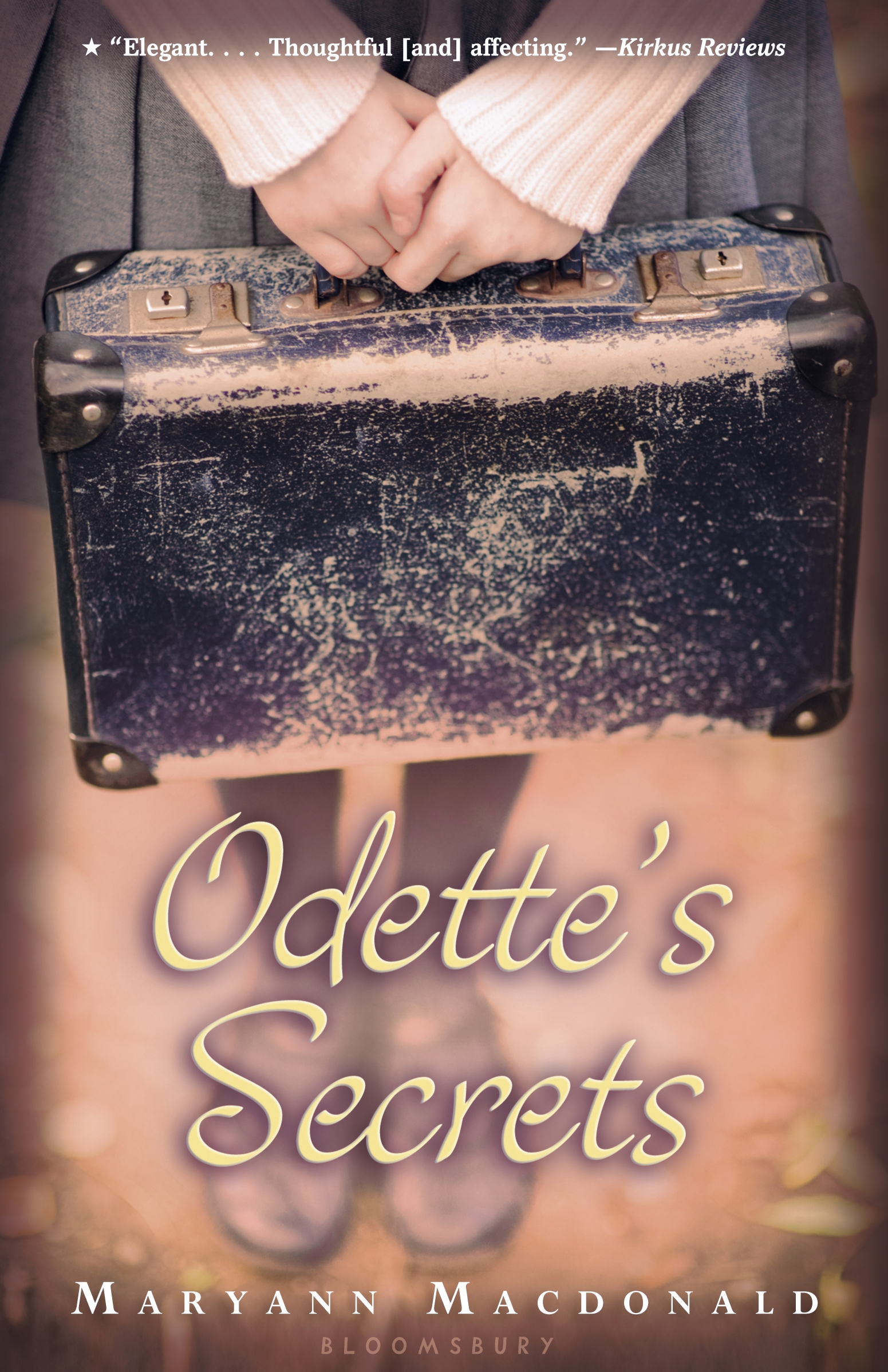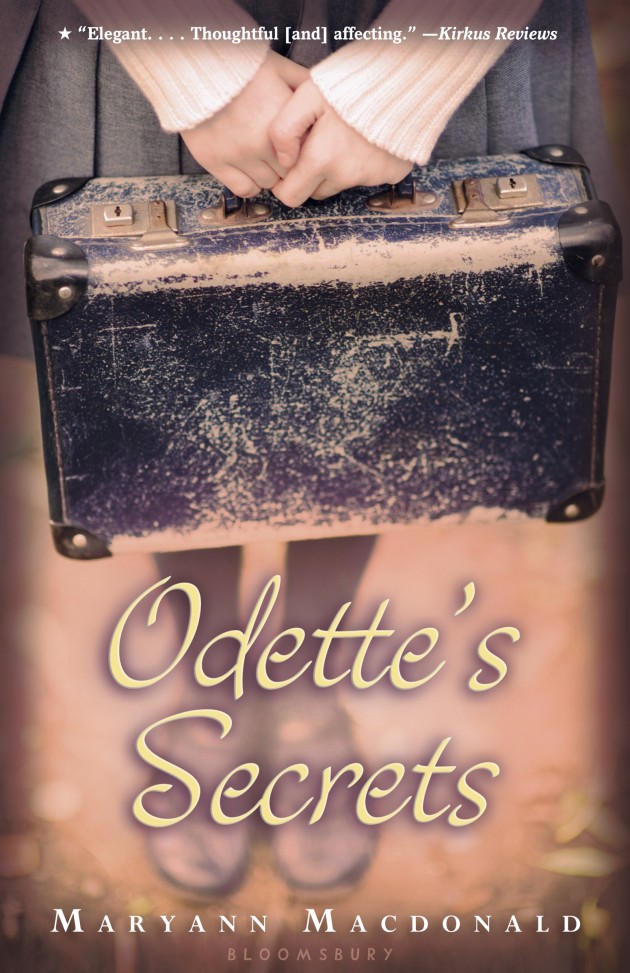
A Conversation With Maryann MacDonald
“Let’s see if we can,” my husband said, and pressed his fingertips against the door. It swung open! In moments we were standing in the tiled hallway where Odette played with her red rubber ball. At the end was the tiny apartment of her godmother, Madame Marie, the place where Odette and her mother hid in the broom closet when the police came at dawn to arrest them. The opening of that door seemed like a sign to me…I just had to write the story of Odette’s remarkable childhood for today’s children.
Why did you write it in free verse?
Originally, I tried to write Odette’s story as a straight biography. This seemed too dry. Then I remembered that Odette loved poetry. When she moved to the United States with her family after the war, she married the poet Bert Meyers, taught literature and wrote poetry herself. So, after a few false starts, I began writing her story in first person, in free verse, imagining, insofar as I was able, the childhood voice of Odette, a poet-to-be.
At this point, since I was imagining Odette’s voice, the work became fiction, although I did not make up any of the events mentioned in the book. What I did was add detail, such as giving Odette’s doll a name, and putting into words conversations alluded to in her book and in her mother’s autobiography.
 And then you met Odette’s son Daniel…
And then you met Odette’s son Daniel…
Meeting Daniel was wonderful! He’s a lovely person, a filmmaker. But I didn’t know this when I found his number in the Paris telephone directory. With my heart in my mouth, I dialed and left a message, explaining who I was and that I wanted to use the facts of his mother’s life as the basis of a book for children. Then I waited. A few days later, Daniel called me back and invited me to lunch in his sunny apartment on the rue Rambuteau. He listened to my request and made his decision almost immediately. His mother, he said, had often talked in schools and libraries to children about her wartime experiences. He was sure she would want her story to live on. As her literary executor, he gave me permission to write the story of his mother’s childhood. He also shared his grandmother’s autobiography (originally written in Yiddish), some of his mother’s poems, and many family photographs with me. I was thrilled!
What the family photographs add to your account?
My editor and I debated about how/if to use the photographs. After all, Odette’s Secrets is classed as a work of fiction, and we knew that adding photos might confuse people. But the book is based very closely on a true story, so in the end we decided to use a few photographs, mostly because we loved looking at them and we thought other people would, too. Photos go right to the heart. In the oval school of photo of Odette that appears on the flyleaf of the dust jacket, she is wearing a jumper made by Madame Marie and a sweater with embroidered flowers on it made by Mama. You can see that she is a loved and well-looked-after little girl.
Your book looks at a very dark time in French history, yet you still seem to feel very positively about France.
When my oldest daughter was a baby, I took her out into the garden of the building where we lived in Paris. As she toddled around, I spied a broken-down shed in the corner of the garden, and pushed open the door. The shed held ancient newspapers, rusty bedsprings and boxes and boxes of old shoes! I asked the concierge about it (she was in her nineties, and had been working in our building for many years) and she told me that the shoes had been saved during the war, “in case of need.” Later, I visited Normandy and gradually got to know more about the WWII period in France. I am a Francophile, and love all the sounds and smells and sights of France. Nevertheless, I guess I’ve always wanted to come to terms with the evil things that took place in that country during WWII.
You yourself are not Jewish; how did that influence your recounting of these events?
In the seventies a popular advertising campaign showed people of all kinds – old and young, dark-skinned and light (mostly male, I’ll admit) – eating sandwiches made with rye bread. The slogan underneath the posters was, “You Don’t Have to Be Jewish to Love Levy’s.” I think this was a successful slogan because people responded to its underlying message: “We are all human; we feel things the same way.” Similarly, I think you don’t have to be Jewish to love Odette and her touching struggle to know and save herself, body and soul. And falling in love with her story, as I did, made the challenge of telling it, of staying as close to her individual, intimate experience as possible, a joyful one. I never tired of it.
2 comments on “A Conversation With Maryann MacDonald”
Comments are closed.




Thanks for a great interview, Yona!
What a great interview–and such a wonderful book!